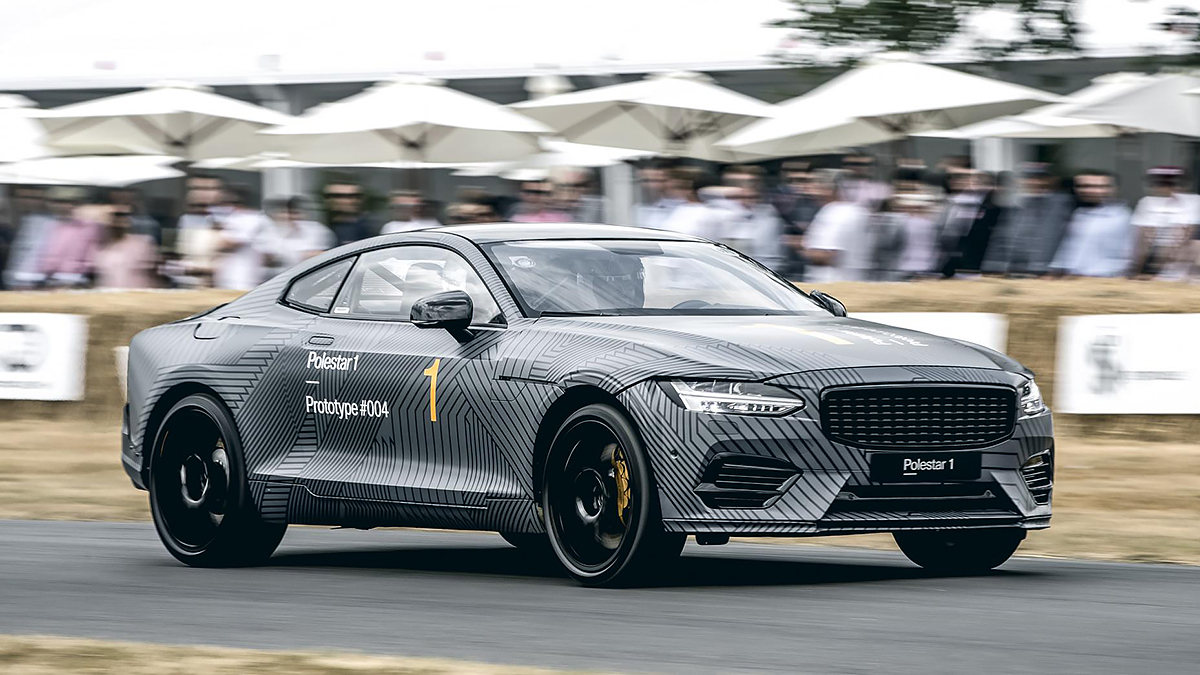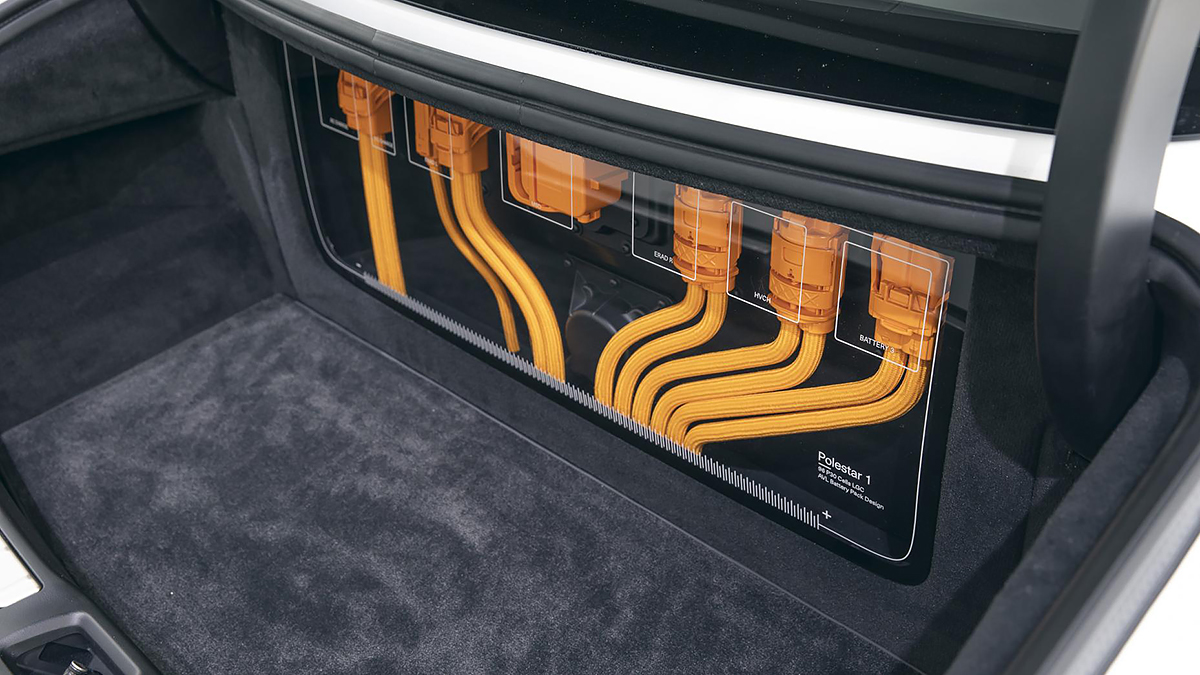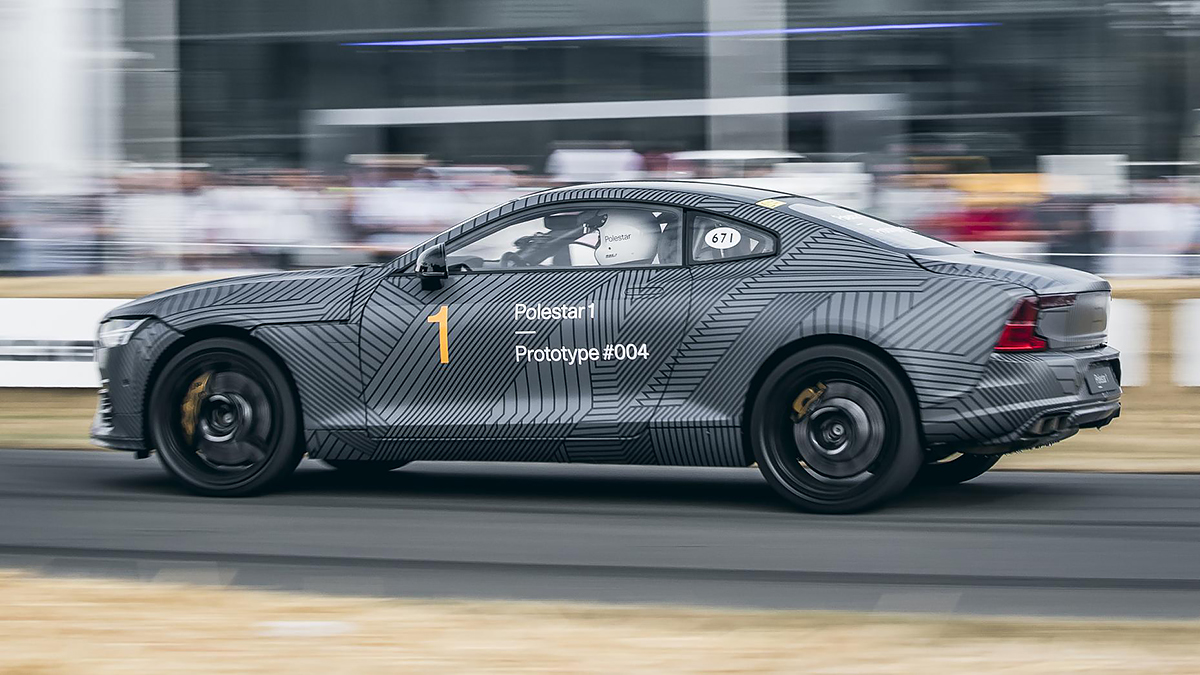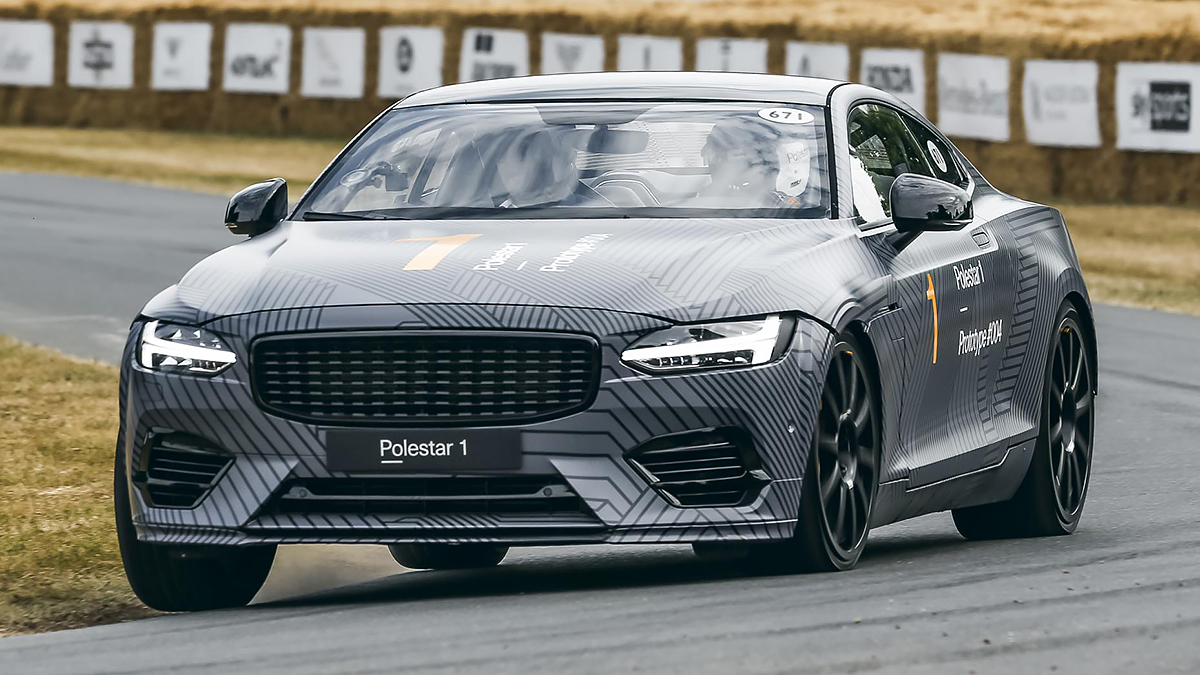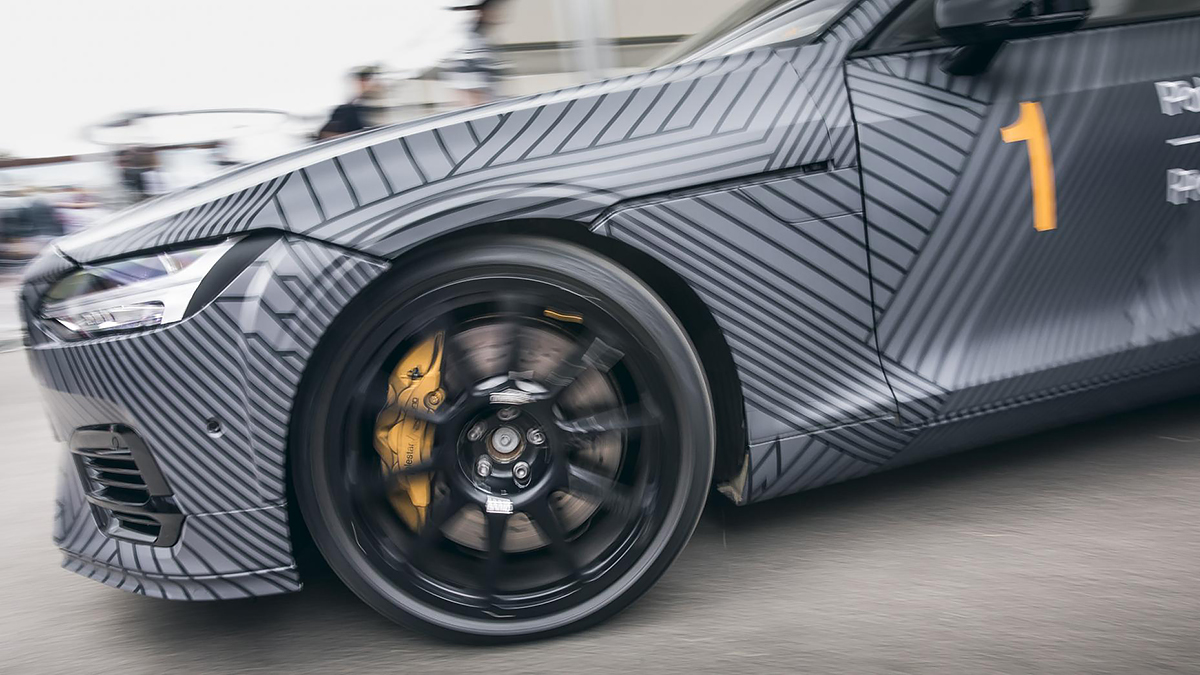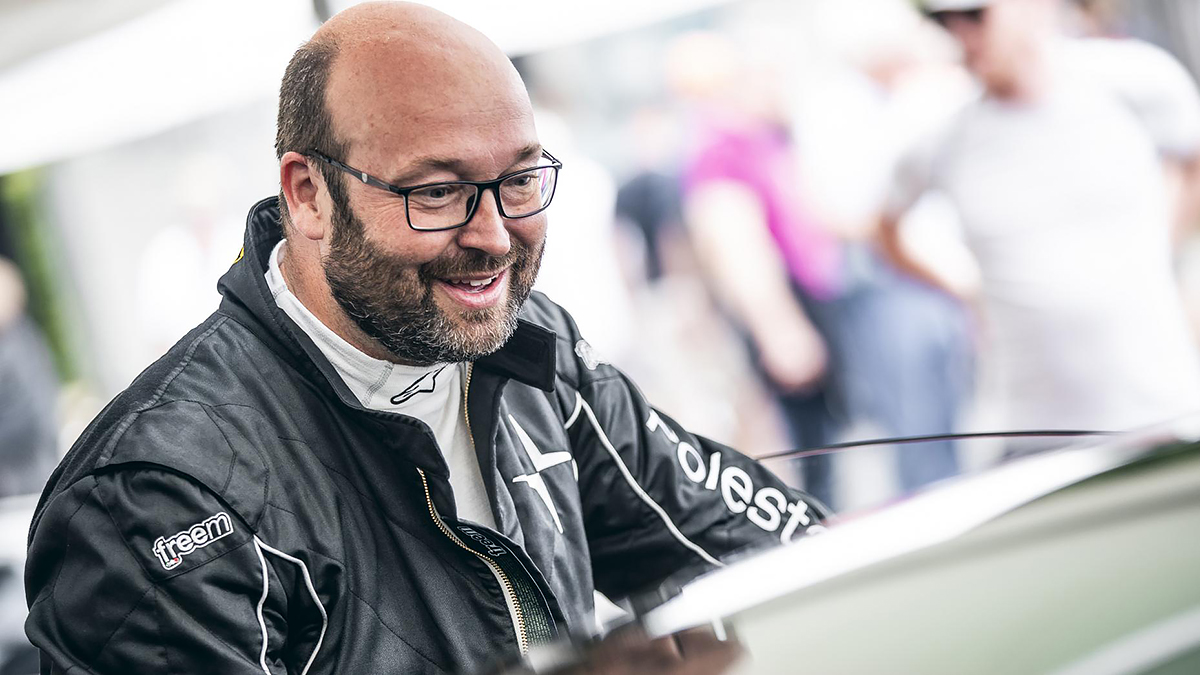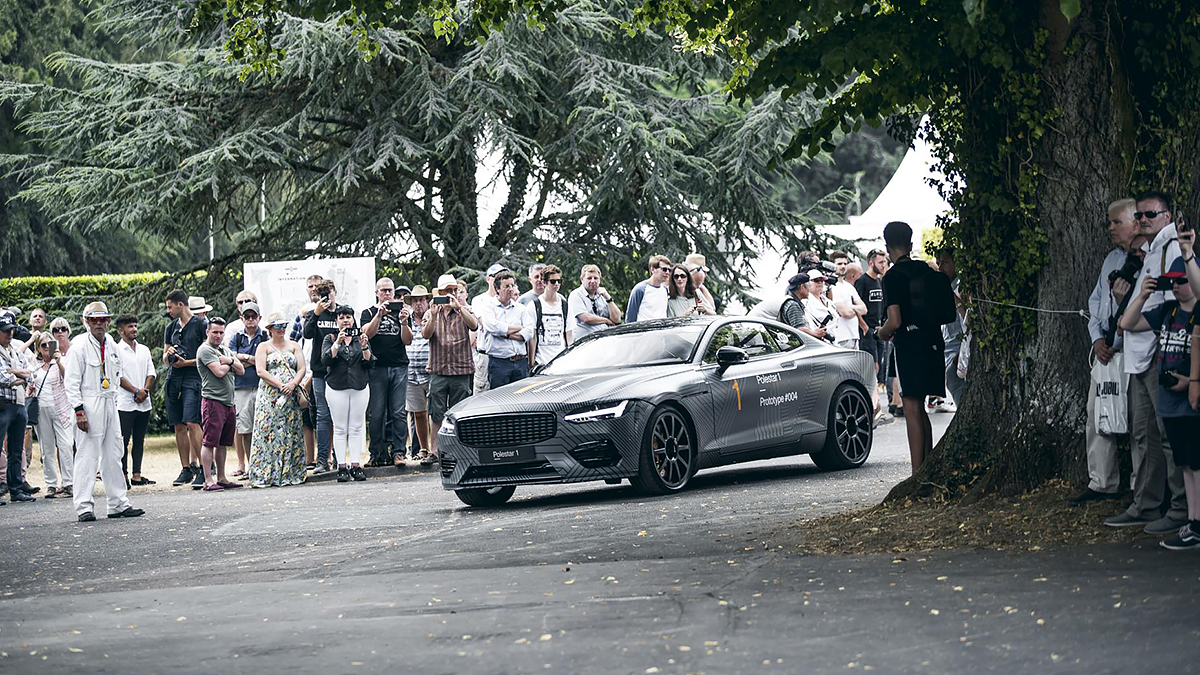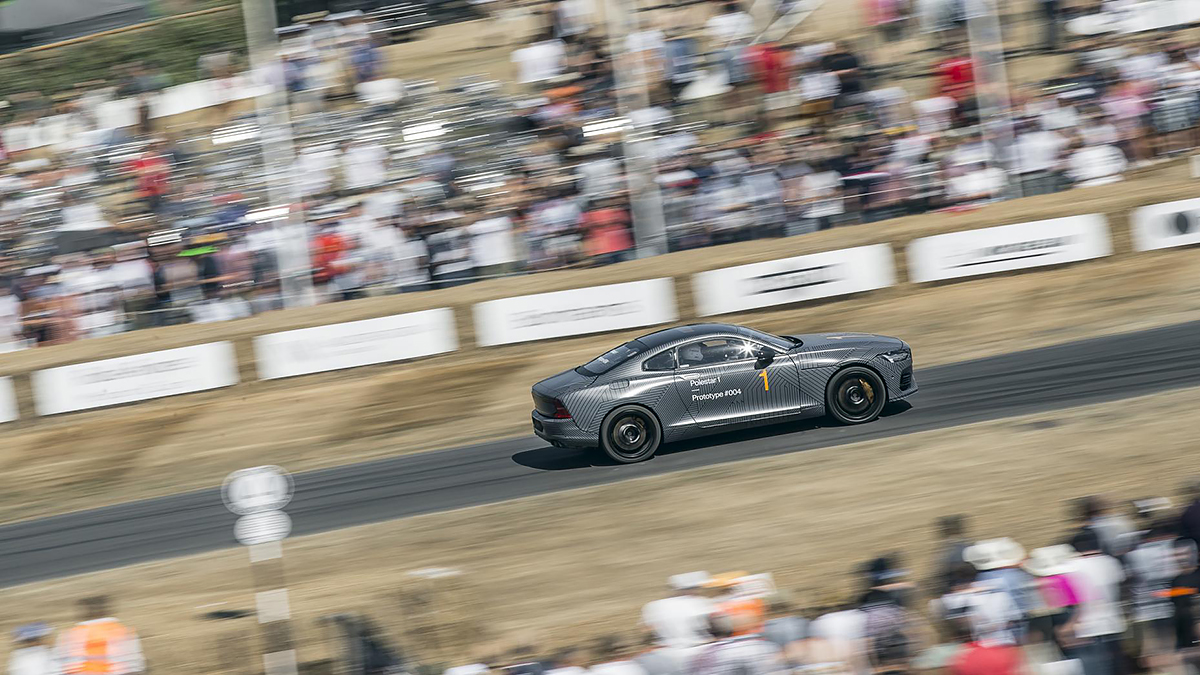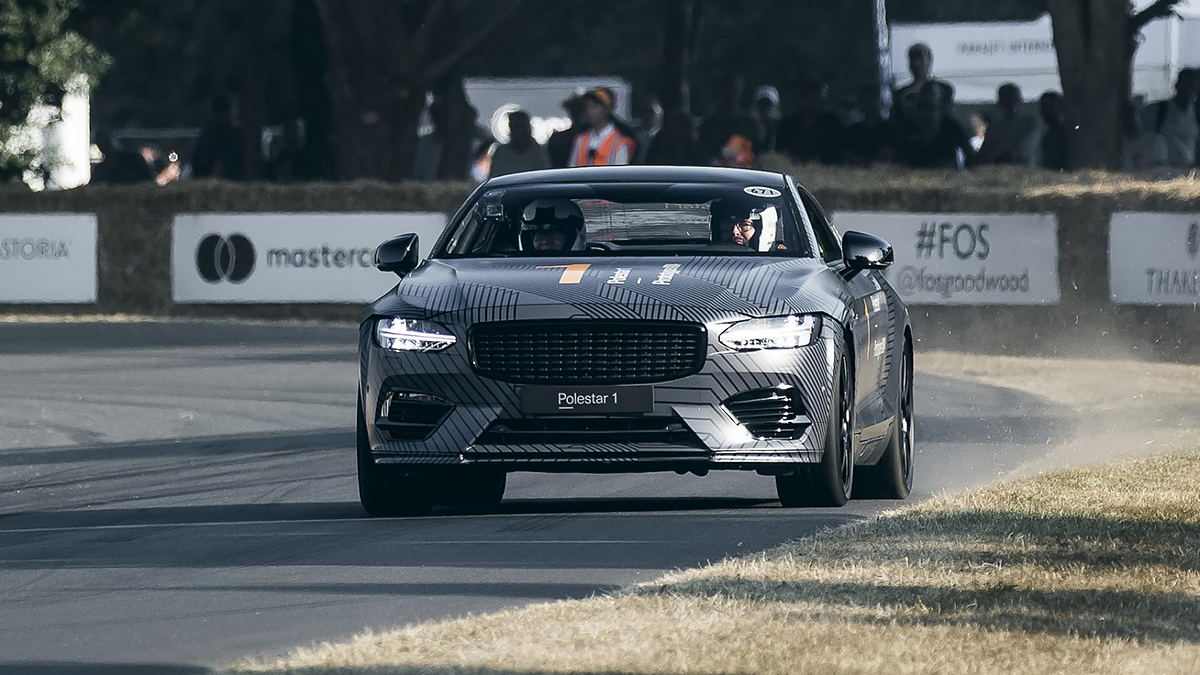It’s definitely not a Volvo
The car’s form is familiar, sharing a lot of its styling cues with parent company Volvo, but the team is at pains to clarify “it’s absolutely not a Volvo”. Time for a recap: Polestar’s racing pedigree dates back to 1996 when it worked with TWR to compete in the Swedish Touring Car Championship in the iconic Volvo 850 Super Touring.
Following campaigns in the S40 and S60, 2009 saw Polestar finish its first complete racing car project in the form of the C30 S2000. In the same year, Polestar became the official partner of Volvo, tasked with delivering performance derivatives. 2013 saw the arrival of the S60 and V60 Polestars, the company’s first production road cars. In 2015, the brand was bought by Volvo. Last year, Volvo announced Polestar would develop and deliver high-performance hybrid and electric cars under the Polestar banner as an independent brand.
Therefore, this is absolutely “not a Volvo”.
It’s a plug-in hybrid, not a pure EV
The Polestar 1 is designed to be the halo product in the range – soon to be joined by a smaller all-electric Tesla Model 3 rival in 2020 – and thus, it needs halo performance.
But it’s not a pure EV. There’s a 2.0-litre four-cylinder supercharged and turbocharged petrol engine driving the front wheels. The supercharger adds torque at the bottom end of the rev range, while the turbocharger takes over above 3,500 rpm.
Then come a pair of e-motors driving the rear wheels, delivering a combined 215bhp. The two e-motors are complemented by an integrated starter generator which adds a further 45bhp. The rear-wheel e-motors are mated to planetary gear sets which enable torque vectoring to aid stability and agility on your favourite B-roads.
The battery stacks of the Polestar 1, which deliver 34kWh and a range of 150 miles on the new tougher NEDC cycle, are located in the transmission tunnel and the boot, providing a 48:52 weight distribution front and rear.
It’s powerful… and fast
In all, the Polestar 1 has a combined output of 592bhp and 1,000Nm of torque, which should be sufficient to have M5 owners looking worried at the traffic lights.
While detailed performance figures are yet to be released, Polestar has already confirmed a 0–100kph time of less than four seconds.
Batteries are heavy, but the bodywork isn’t
To try to counteract the mass of the battery stacks, the Polestar 1 features extensive use of carbon fibre throughout the car’s construction. The roof cross-sections are made from carbon fibre and the steel underbody features a bonded section of carbon-fibre-reinforced polymer (CFRP) between the middle floor and the rear structure which helps increase rigidity.
The majority of the upper body of the Polestar 1, including doors, bonnet and boot, are all made from CFRP to maximise torsional rigidity and lightness.
Polestar is working with the best in the business
The team at Polestar has clearly worked its little black book from over 20 years in motorsport hard, and the Polestar 1 features some impressive collaborations.
The brakes have been developed exclusively for Polestar with Akebono (who developed the brakes for the McLaren P1). The 400mm steel ventilated and drilled discs are hard to ignore – the gold six-piston aluminium monobloc calipers stand out against the monochrome grayness of the rest of the car.
Harder to spot, but no less impressive, are the bespoke Ohlins dampers. Hidden from view, but a feature Polestar test driver Joakim Rydholm (of whom more later) is keen to show us. These manually adjustable dampers will allow owners to hand fettle their car for track use (you can increase stiffness by up to 20 per cent by simply twisting a valve at the top of the mount under the bonnet).
Polestar’s test driver is amusing and evangelical about his work
To understand Polestar and its approach to developing cars you have to meet Joakim Rydholm. The quietly spoken bearded Swede is an ex-Volvo chassis engineer and Polestar’s lead test driver, and is tasked with sole responsibility for the chassis development and set-up for the Polestar 1.
Setting a car up to deploy 592bhp and 1,000Nm with the additional weight and complexity of the hybrid drivetrain is no small task, and Joakim is evangelical about what he’ll do to make sure it delivers. “I’m on my 72nd version of the front suspension tuning and about 80th on the rears”.
He has an infectious enthusiasm for the project. He’s also never been to Goodwood before and my passenger ride with him will only be his second time up the hill. I’m hoping that his background competing in rallies in an Evo X will see us safely navigate the course.
Even amongst the hypercars at Goodwood, it gets noticed
As we join the queue for the First Glance run, sandwiched behind the Aston Cygnet V8 and Toyota Supra A90 prototype, the Polestar 1 is drawing a crowd. We sit in the queue silently, but the camouflage is drawing people towards Prototype #004 and Joakim fields enquiry after enquiry.
The queries range from “what is it”, to “isn’t it a Volvo”, to “when can I get one”. People seem genuinely fascinated. As the Aston Cygnet V8 barks into life ahead of us we head out of the paddock to the start line.
The acceleration is brutal
Joakim is grinning from ear to ear, clearly loving every moment of his first visit to Goodwood. We leave the tyre-warming area untroubled and soon we’re on the line and being waved up the hill by the marshal. What happens next is violent.
The Polestar 1 takes a while to battle physics, but after an initial pause to harness the mass, the acceleration is brutal. The combination of 738lb ft of torque and all-wheel drive clawing through the tarmac is impressive. Moments later Joakim is hard on the brakes and into the first right-hand turn. We barrel past the house on a ceaseless wave of torque, towards the infamous Molcombe left-hander.
There’s just enough time to take note of the soundtrack: the 2.0-litre engine is clearly working hard and its pretty standard engine note is thankfully being drowned out by the futuristic whine from the e-motors. It’s an odd but intriguing noise.
Ride’s good, too
Conscious that this is Joakim’s second only time on the hill, I helpfully add some pace notes. “Brake, brake… no really BRAKE” as we crest the rise and the Akebonos go to work, the front of the car compressing into the tarmac under the shifting mass.
The car slows and Joakim rotates it into the turn and uses the mid-corner traction to fire us up the hill towards the flint wall. The speed builds and, as the car flicks round the wall and on up the hill, there’s a supple, unruffled compliance to the ride quality.
It’s impressive, but there’s still work to be done
Judging any car from the passenger seat is pretty futile, but what’s undeniable is that the accelerative performance is impressive. It’s clearly managing a lot of mass, and does so well, but on a track it could be set up slightly stiffer to minimise pitch and roll – something owners would be able to do with the adjustable Ohlins.
While getting the dynamics of the car right is essential and our first experience in the Polestar 1 has impressed, creating a brand with enough equity to attract high net worth owners is equally important. The Polestar 1 will start at £120,000 (RM635,000) which is punchy when you consider a BMW M5 starts at £90k.
The brand’s success will depend on attracting an audience looking for an alternative to the regular performance brands – and one willing to pay a premium for it.
While Prototype 004 made an impressive debut on the hill, the wider aspirations for the brand were articulated in the impressively elegant and simple Polestar Pagoda stand positioned opposite Goodwood House. In a world full of clutter, the elegant simplicity of what Polestar is delivering is a welcome break from the noise; understated sustainable luxury is something that will be hugely attractive.
In fact, since the launch of the Polestar 1 the number of people signing up to its subscription based ownership scheme has already outnumbered initial production allocation. Time will tell just how large that client base is, but our first impressions are that the team from Gothenburg could well be onto something.
